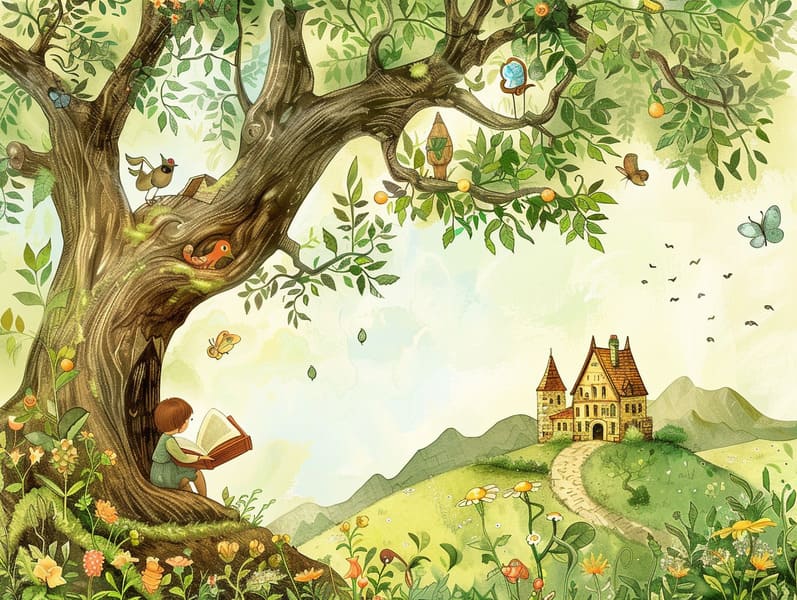The Genesis of Ancient Fairy Tales and Their Endless Fascination.
The Genesis of Ancient Fairy Tales and Their Endless Fascination.
Blog Article

Best fairy tales have ancient roots. These narratives have been whispered from one generation to the next millennia before they were ever published. They arose from a variety of backgrounds, including American traditions. They were initially disseminated among elders, often carrying themes and messages concerning the societal norms and beliefs of the time.
The Brothers Grimm, Jacob and Wilhelm Grimm, were among the first to gather and publish many of these beloved fairy tales. Their anthology, "Grimm's Story Collection," included stories like "Cinderella," "Little Brother and Little Sister," and "Snow White," which have since become mainstays in the world of traditional fairy tales. Similarly, H. C. Andersen's enchanting fairy tales, such as "The Mermaid's Tale," and "The Duckling that Could," have won hearts worldwide, solidifying their place in the pantheon of classic fairy tales.
Despite being ancient, these stories remain as pertinent as ever, especially as kids' bedtime tales. These whimsical stories are now available in different formats, including colorful picture books, captivating animations, and free fairy tales online.
Their persistent charm can be ascribed to several whimsical characteristics:
Significant Morals: Timeless fairy tales often provide important moral lessons. Tales like "The Wolf and the Liar" teach the value of integrity, while "The Tale of the Tortoise and the Hare" show the qualities of steadfastness and unassuming nature. These stories offer little ones clear distinctions between virtue and vice, forming their moral compass in a kind yet impactful way.
Warmth and Understanding: Ancient fairy tales frequently showcase beings facing challenges and problems, encouraging young listeners to understand with their struggles and back their triumphs. For instance, "Beauty's Beast" reveals the value of looking deeper to recognize the true essence of a soul, building compassion and perception.
Cultural Perception: Many ancient fairy tales are deeply embedded in the cultural contexts from which they sprang. Delving into these narratives can provide captivating looks into different traditions, encouraging a sense of global insight and appreciation.
Creativity and Fantasy: The whimsical elements in old fairy tales—magical spells—revitalize children’s imaginations. These tales lead readers to imaginary realms, promoting imaginative ideas and a sense of fascination that persists a lifetime.
Ancient fairy tales are not only fantastical but also illuminating. They act as magical tools in fostering various mental and emotional abilities in little ones. When traditional fairy tales are read aloud, they strengthen communication skills by showing new language items and complicated sentence structures. This practice also promotes hearing perception and concentration, as the young listen intently, prepared to see what happens next.
Furthermore, conversing about the themes and characters of classic fairy tales can develop problem-solving abilities and analytical skills. Young ones are guided to find patterns, anticipate outcomes, and figure out cause and effect. These explorations here also boost young ones speak out their thoughts and feelings, advancing their emotional intelligence.
In today’s technological age, the availability of digital storybooks has made these narratives more available than ever. Online platforms and online apps give large libraries of classic fairy tales that can be accessed or listened via anytime, anywhere. Fairy tales voiced are particularly widespread, presenting an enjoyable way for children to experience these enchanting tales. Audio stories and narrated videos transport characters and settings to life, often supplemented by mesmerizing soundtracks and tunes that heighten the tale journey.
The enduring charm of ancient fairy tales lies in their ability to shift to current eras while continuing with their fundamental ideas. Contemporary retellings of these stories often show more different figures and modern settings, making them meaningful to today’s audience. However, the main ideas of daring, goodness, and rightness remain unchanged, continuing to influence audiences of all ages.
Ancient fairy tales also offer a sense of peace and understanding. They grant access to a ordered narrative with a clear beginning, middle, and end, often wrapping up with the wrap-up of conflicts and the triumph of morality over wickedness. This steadiness can be placating for the young, delivering a sense of steadfastness in an constantly changing world.
Timeless fairy tales continue to enchant and instruct new generations, maintaining their wonder and meaningfulness in modern society. As bedtime stories for kids, they offer a perfect blend of charm and understanding, nurturing moral values, empathy, and creativity. The accessibility of online storybooks and the favor of fairy tales read out loud secure that these traditional narratives remain available to new generations.
By preserving and telling these stories, we continue to exalt the rich tapestry of mythology and cultural heritage. Whether you are perusing a vividly illustrated book, enjoying a cyber library, or hearing an sound book, the radiance of traditional fairy tales is always within reach. These stories convey of the ageless impact of narratives and its ability to bind us across generations and cultures.
Whether you are viewing a vividly illustrated book, experiencing a cyber collection, or listening through an spoken story, the majesty of Grimm's fairy tales is always within reach.
These narratives illustrate of the eternal ability of storytelling and its ability to hold us together across centuries and lands, casting a charm that charms and informs alike.